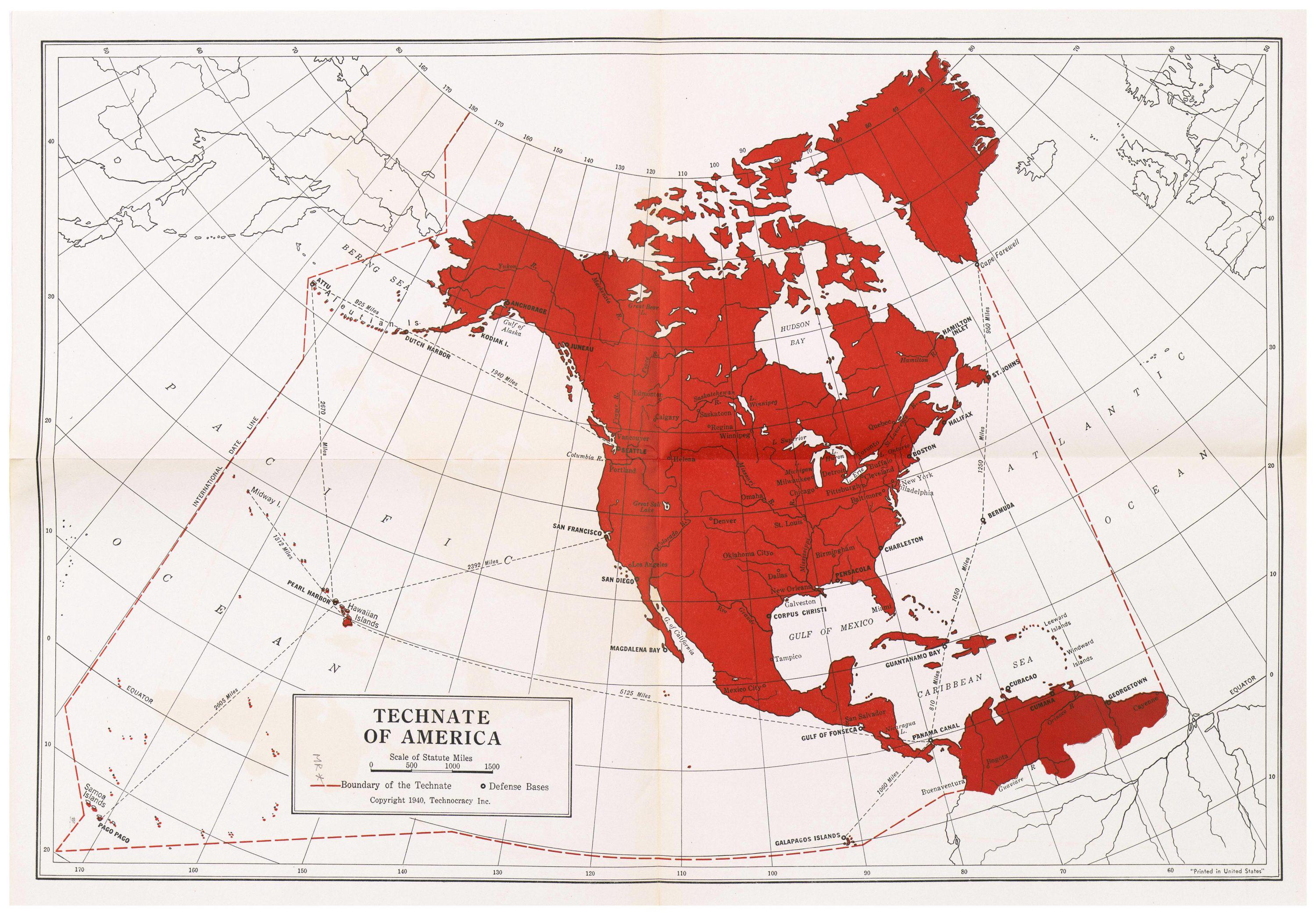Technate of America Map - Proposed Technocracy Country


Alex Cartwright
Senior Cartographer & GIS Specialist
Alex Cartwright is a renowned cartographer and geographic information systems specialist with over 15 years of experience in spatial analysis and data...
Geographic Analysis
What This Map Shows
The "Technate of America" map represents a visionary proposal put forth by the Technocracy Group in the 1930s, delineating a reimagined nation based on scientific principles and resource management rather than traditional political boundaries. This visualization outlines the geographical extents of what the Technocracy advocates envisioned as a new societal structure. The proposed Technate aimed to optimize production and distribution through a technocratic governance model, where engineers and scientists would guide economic decisions. This map serves as a historical reflection of an intriguing idea that sought to transform the fabric of American society based on efficiency and sustainability.
Deep Dive into Technocracy
To fully appreciate the implications of the Technate of America, we need to delve deeper into the concept of Technocracy itself. Emerging in the early 20th century during the aftermath of the Great Depression, Technocracy proposed a radical shift from capitalism to a system where technology and expertise would dictate the management of resources. The Technocracy Group believed that the economic chaos of the time was a result of inefficient and outdated political systems, and they argued that a scientifically managed economy could produce abundance and eliminate scarcity.
Interestingly, the Technocrats viewed the economy as a complex system that could be modeled and optimized similarly to engineering projects. They advocated for the replacement of money with a resource-based economy, where goods and services would be distributed according to need and availability, rather than profit. This approach aimed to eliminate waste and improve living standards for all citizens.
The proposed Technate was to be governed by a council of engineers, scientists, and technical experts, who would utilize data and metrics to make decisions. The Technate of America map illustrates regions of North America that would become integral parts of this new societal structure, with a keen focus on resource distribution, industrial zones, and population centers. The envisioned Technate was not limited to mere geographical boundaries; it represented a shift in societal values towards a more rational and scientific approach to governance and resource management.
Regional Analysis
Breaking down the regions indicated on the Technate of America map reveals fascinating insights into how the Technocrats envisioned the organization of society. For instance, the Great Lakes region, rich in water resources and industrial potential, would likely serve as the hub for manufacturing and energy production. Cities like Chicago and Detroit, abundant in infrastructure and workforce, would be central to this new industrial strategy.
Conversely, areas such as the agricultural plains would be designated as zones for sustainable farming and food production. The Technocrats believed that by centralizing agricultural practices, they could maximize yield while minimizing environmental impact. In contrast, regions with less industrial potential, such as parts of the Appalachian Mountains, might be allocated for conservation efforts, reflecting a holistic approach to land use that balances human needs with ecological preservation.
This regional analysis highlights the Technocrats' vision of a balanced society where each area contributes to the overall efficiency of the Technate. The proposed divisions were not arbitrary; they were based on scientific assessments of resources, population density, and environmental sustainability.
Significance and Impact
The significance of the Technate of America proposal cannot be understated, especially when considering its implications for contemporary discussions around governance, resource management, and sustainability. The idea of a technocratic society raises questions about the role of expertise in decision-making, especially in an era marked by climate change and resource depletion.
Today, as we face unprecedented challenges related to environmental sustainability and economic inequality, the core tenets of Technocracy—efficiency, scientific management, and resource optimization—resonate with current trends in sustainable development and smart city initiatives. Have you noticed how cities are increasingly turning to data and technology to improve urban living? The legacy of the Technocracy movement can be seen in efforts to create more efficient, livable urban environments.
Interestingly, discussions around universal basic income (UBI) and other innovative economic models reflect a renewed interest in alternatives to traditional capitalism, echoing some of the foundational ideas proposed by the Technocrats. As we look to the future, understanding the Technate of America and its vision offers valuable insights into the potential pathways for organizing society in an increasingly complex world.
By examining this map and its historical context, we not only gain a glimpse into a unique vision of America but also engage in a broader conversation about how we might shape our society moving forward.
Visualization Details
- Published
- September 9, 2025
- Views
- 166
Comments
Loading comments...